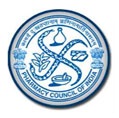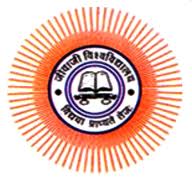 SAT
SAT
The SAT Reasoning Test (formerly Scholastic Aptitude Test and Scholastic Assessment Test) is a standardized test for college admissions in the United States. The SAT is owned, published, and developed by the College Board, a non-profit organization in the United States, and was once developed, published, and scored by the Educational Testing Service (ETS). ETS now administers the exam.
Structure
SAT consists of three major sections: Critical Reading, Mathematics, and Writing. Each section receives a score on the scale of 200-800. All scores are multiples of 10. Total scores are calculated by adding up scores of the three sections. Each major section is divided into three parts. The test contains 3 hours and 45 minutes of actual timed sections. The questions range from easy, medium, and hard depending on the scoring from the experimental sections. Easier questions typically appear closer to the beginning of the section while harder questions are towards the end in certain sections. This is not true for every section but it is the rule of thumb mainly for math and sentence completions and vocabulary.
Critical Reading
The Critical Reading, formerly verbal, section of the SAT is made up of three scored sections, two 25-minute sections and one 20-minute section, with varying types of questions, including sentence completions and questions about short and long reading passages. Critical Reading sections normally begin with 5 to 8 sentence completion questions; the remainder of the questions is focused on the reading passages
Mathematics
The Mathematics section of the SAT is widely known as the Quantitative Section or Calculation Section. The mathematics section consists of three scored sections. There are two 25-minute sections and one 20-minute section, as follows:
Writing
The writing section of the SAT, based on but not directly comparable to the old SAT II subject test in writing, includes multiple-choice questions and a brief essay. The essay sub score contributes about 30% towards the total writing score, with the multiple choice questions contributing 70%.
Style of questions
Most of the questions on the SAT, except for the essay and the grid-in math responses, are multiple choice; all multiple-choice questions have five answer choices, one of which is correct. The questions of each section of the same type are generally ordered by difficulty. However, an important exception exists: Questions that follow the long and short reading passages are organized chronologically, rather than by difficulty. Ten of the questions in one of the math sub-sections are not multiple choice. They instead require the test taker to bubble in a number in a four-column grid.
The questions are weighted equally. For each correct answer, one raw point is added. For each incorrect answer one-fourth of a point is deducted. No points are deducted for incorrect math grid-in questions. This ensures that a student's mathematically expected gain from guessing is zero. The final score is derived from the raw score; the precise conversion chart varies between test administrations.
Taking the test
The SAT is offered seven times a year in the United States, in October, November, December, January, March (or April, alternating), May, and June. The test is typically offered on the first Saturday of the month for the November, December, May, and June administrations. In other countries, the SAT is offered on the same dates as in the United States except for the first spring test date




































